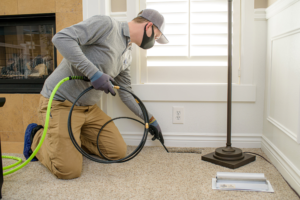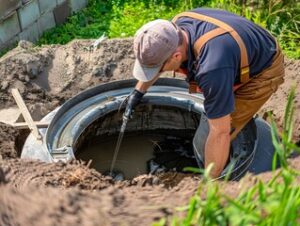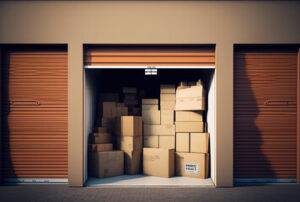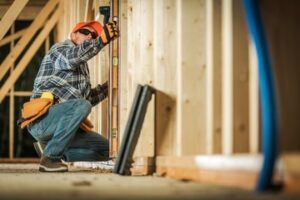Helena SEO Pro’s isn’t just about keywords – it’s about the whole content of your site and how well it’s written. You must write with your keyword in mind (and LSI keywords) but make sure it’s readable and informative.

Search engines like Google crawl and index web pages (like articles). When someone searches, the engine looks through this library of indexed items to find the best matches.
Keywords are the foundation of SEO and can make or break a business’ online marketing strategy. However, many businesses are not aware of how to use keywords effectively. As a result, they may be missing out on valuable traffic. In addition, they could be using too many or the wrong keywords. Keywords should be incorporated into the content of your website in a natural and relevant way.
When choosing keywords, it is important to identify the needs of your target audience. This will help you create content that satisfies their search intent and drives targeted traffic to your site. Keyword research can also provide you with valuable insights into your competitors’ strategies and tactics.
A ‘keyword’, in the sense that we investigate them on this site, is a socially prominent word that carries interlocking and sometimes contradictory contemporary meanings and has the potential to influence debate and discourse in a particular field or topic. The interaction between these meanings is complex and often remains unresolved.
Singular keywords typically have a high search volume, which makes them tempting to target. However, they can be difficult to rank for because of the strong competition from established websites. For example, if your boutique clothing store wants to rank for the keyword “clothes,” you will face stiff competition from major retailers like Amazon and H&M. Additionally, it is impossible to know if someone searching for “clothes” actually wants a list of clothes stores, information about the latest trends, or a place to buy clothes.
Keywords that are related to your brand or industry are known as branded search terms, and you should try to optimize for these terms as much as possible. Branded search terms include misspellings, branded acronyms, branded campaign names or taglines, parent companies, and any other term that is obviously associated with your brand. Unbranded keywords are words that describe the customer problem or your business’s offering, and they are generally a lower priority than branded search terms.
While many people think that ‘keyword stuffing’ is the best way to improve their SEO, this is not necessarily the case. Overusing keywords can be a turn-off for users and can lead to penalties from Google. Additionally, excessive use of keywords can make your content look spammy and will detract from its quality.
Content
Content is a key part of any SEO strategy. It provides information about your business and helps potential customers find it. It can be in the form of text, images, or video. It is important to have quality content on your website because it improves user experience and increases conversions. Additionally, it can help you rank higher in search results.
What is SEO content? SEO content is any high-quality information on your website that answers questions or solves problems for your audience. It can be in the form of product or service pages, blog posts, or any other type of content.
The purpose of SEO is to improve your website’s visibility and search engine rankings. While there are many different ways to do this, the most effective approach is to focus on creating relevant content that addresses your audience’s needs and wants. This will help you rank better in search engines and drive more organic traffic to your website.
It’s also important to keep in mind that SEO is not just about keywords. There are other factors that contribute to your ranking, including URL structure, meta tags, HTML markup, and site navigation. These are known as on-site SEO and help determine how your website is ranked. However, it’s important to remember that these factors alone are not enough to improve your rankings.
Quality content is essential for SEO, because it is the only way to rank well in search engines. It should be relevant to the search query, informative, and engaging. It should also be grammatically correct and free of errors. Finally, it should include relevant keywords in the title and body of the page.
In addition to providing value to your audience, SEO content can also increase your revenue from search. This is because it is more likely to convert visitors into customers, especially if it targets bottom-of-the-funnel searches. Moreover, it can help you avoid the cost of pay-per-click ads, which are often expensive and not as targeted. Furthermore, it can improve the performance of your website, increasing your website traffic and sales.
Link building
Link building is an important part of SEO, the process of optimizing a website to rank higher on search engines. It involves getting other websites to link to your site, which improves the authority of your pages and increases traffic from those links. However, it’s important to avoid spammy techniques that could lead to a Google penalty.
Google, Bing, and other search engines use so-called “crawlers” to find webpages on the internet. These crawlers move from page to page, collecting basic information about each page they encounter. They then compile this information into an index, which searchers use to find what they’re looking for. The more quality links your website has, the higher it will rank in the index.
There are a number of different ways to build links for your site, but not all of them will be effective. Some of these methods are considered black-hat, or unethical, and can get you in trouble with Google. For example, using link farms and purchased links can get your website banned from the search engine results pages (SERPs).
The best way to build links is to create content that’s so compelling that people will want to share it with others. This can include articles, videos, infographics, and other types of media. You should also consider creating a blog on your website and contributing to relevant blogs in your niche.
Some other popular link-building tactics are broken link building, image link building, HARO, and journalist requests. These methods are not foolproof, but they’re a great place to start if you don’t have the time or budget to invest in more advanced techniques.
When reaching out to potential linkers, it’s crucial to send a personalized email that provides value. For example, you can mention something personal about the person or a recent article they’ve written. This can help you stand out from the crowd of other automated emails. It’s also a good idea to offer to provide a guest post, free samples of your product, or other incentives that may persuade them to link to your site.
Analytics
One of the best things about SEO is that it’s data-driven. However, it can be difficult to track all the metrics that influence search engine algorithm rankings. That’s where web analytics tools come in. With the right tools, you can get real-time data and insights into your performance and improve your SEO strategies.
There are many different web analytics tools, but the most popular is Google Analytics. It’s a free tool that allows you to monitor and analyze your website traffic. It also offers SEO features, such as keyword optimization and content analysis.
It’s important to use Google Analytics to understand what is driving traffic and how to optimize it. A good way to do this is by using the Keywords Report to determine your most valuable keywords. This will give you a clear idea of what type of content your target audience is looking for. It will also help you create relevant content that will rank higher in SERPs.
Another useful feature is the Custom Alerts service, which sends email notifications when there are changes in your data. You can set up alerts based on a number of criteria, including organic traffic increases and decreases. This will allow you to stay on top of your SEO efforts without having to open the Google Analytics interface all the time.
You can also improve your SEO by monitoring the SEO metrics of your competitors. For example, you can compare the organic traffic and the number of referring domains for your competitors’ pages. You can do this by logging into Ahrefs and using the Site Explorer tool. You can even see the organic keywords used by your competitors to optimize their rankings.
SEO is all about understanding your customers’ needs and creating better experiences. It requires research, strategic thinking, and technical expertise. But what’s most important is that you have a clear plan of action and a way to measure your progress. With the right tools, you can make the best decisions to achieve your goals.
SEO involves a lot of work, and it can take months before you see results. But if you do it right, you can maximize the impact of your SEO strategies. Whether you’re updating your content or optimizing your website, be sure to track and document the results. Otherwise, it will be hard to evaluate your success once your updates begin to yield results.








